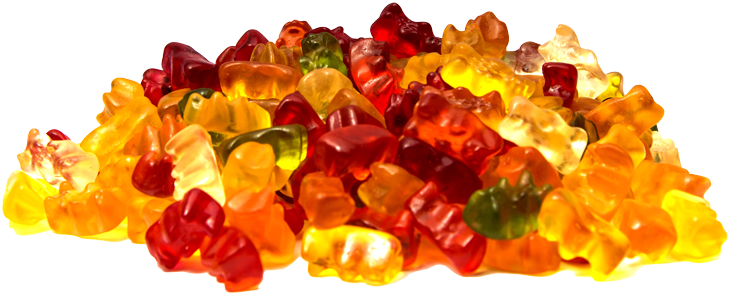Table of Contents
Ah, the joyous season is almost upon us, and retailers are donning their festive hats to prepare for the promotional whirlwind – scrambling to finalize the assortment and promotions for the season.
Yet, amidst the tinsel and cheer, there’s a not-so-merry disruptor lurking—In-store product cannibalization.
What exactly is this grinch-like phenomenon, how does it threaten the holiday merchandising feast, and how can AI save the day? Let’s unwrap the mystery.
Unmasking Product Cannibalization
Picture this: one product munching on the demand of another, akin to a festive feast gone awry. This, my friends, is the essence of in-store cannibalization. It’s like musical chairs, but instead of chairs, products are vying for the attention of eager shoppers.
But why does this happen? Blame it on the combination of rampant discounts and the waning loyalty towards brands, especially for everyday products.
The grocery aisle becomes a battleground, and every product hopes to be the shining star of the season. Steep discounts and promotions become the magic wand, but sometimes, the spell goes awry, leading to products devouring each other’s demand. It’s a retail jungle out there!
The Sales Tango – When Promotions Hit The Floor
In the delightful world of sales bumps, customers aren’t just making purchases; they’re doing the purchase acceleration mambo—maintaining their usual consumption but sneakily stockpiling for increased consumption later. Talk about a shopping spree with a twist!
Then there’s the increasing quantity cha-cha. Customers aren’t just sipping on a soft drink; they’re guzzling down bottles of joy because, hey, its holiday season! More sips, more smiles, and a whole lot of consumption celebration.
Now, let’s salsa into switching behavior. Picture this: a customer gracefully gliding from a cola to bottled water (that’s some fancy category switching), or doing the brand tango—swapping from Coke to Pepsi. Oh, and don’t forget the store shuffle—picking a different supermarket for a shopping spree. Lastly, there’s the SKU salsa—grabbing a different product of the same brand, right there, right then.
Repercussions Of Demand Shift
While we’re busy calculating the demand lift due to promotions, the silent shift in demand often goes unnoticed. Well, my fellow retailers, it’s not just a minor hiccup—it’s a disruptive force.
In the study by Van Heerde et al., it’s a tale of two stores: one offering a tantalizing price promotion, and the other, well, just doing its regular thing. Imagine the suspense!
For the peanut butter enthusiasts (yes, that’s a thing), the findings are like music notes in a symphony. There are cross-brand effects (43% shift in secondary demand), cross-period effects (24% shift due to primary demand borrowed from other time periods), and category expansion (33% shift due to market expansion and cross-store effects).
What does this mean for Retailers?
It means shelves groaning under the weight of aging stock, margins doing a disappearing act, and, in some cases, products reaching their expiration date in bulk. Talk about post-holiday blues lingering like an unwelcome guest into the next year.
It’s time to take off the rose-tinted glasses and acknowledge the ripple effect of in-store cannibalization.
AI’s Carol For Retail Success
Fear not, weary retailers, for there’s a solution to tame the cannibal Grinch! The key lies in a symphony of demand forecasting and replenishment frameworks that not only capture the demand “LIFTS” but also dance to the tune of demand “SHIFTS” caused by promotions.
Picture this: a symphony of algorithms orchestrating a flawless forecasting and replenishment framework that not only predicts the future but does so with a keen awareness of cannibalization effects.
AI, with its prowess in data analysis and pattern recognition, transforms the art of prediction into a science. By sifting through mountains of historical sales data, weather patterns, social trends, and even the subtle nuances of consumer behavior, AI paints a vivid picture of what lies ahead. But what sets it apart in the realm of cannibalization is its ability to dissect the intricate relationships between products.
Traditional forecasting models often struggle to capture these nuanced interactions. AI, however, navigates this labyrinth effortlessly. Through advanced machine learning techniques, it identifies not only the direct impact of one product on another but also the ripple effects that resonate through the entire inventory.
Moreover, its ability to optimize order schedule based on supply chain constraints such as lead time, minimum order quantity, order frequency etc. as well as category factors such as expiration dates, and shelf life at a granular level clearly sets it apart from the traditional approach.
Achieve lean inventory, reduce out-of-stocks and food wastage by algorithmically optimizing your replenishment with 1-click intelligent replenishment.
Future-proofing Your Retail Game
What makes this framework future-proof is the adaptability of AI. It doesn’t just learn from historical data; it evolves with the changing landscape of consumer preferences and market dynamics.
Moreover, AI is rooted in its ability to handle complexity. Traditional methods might falter when faced with a myriad of variables, but AI thrives in complexity. The more data it has, the better it becomes at untangling the web of relationships within a product portfolio.
Imagine a world where your supply chain processes are aligned not just for individual products but for the entire product class. It’s a harmonious dance where each product complements the other, ensuring that post-holiday blues are replaced with a festive glow of success.
So, as you gear up for the seasonal planning extravaganza, remember the AI carol that sings the tune of demand shifts and lifts. Let it be your guiding star through the retail holiday galaxy, ensuring that jingle bells are heard, not the knells of cannibalization.
Happy seasonal planning, and may your shelves be merry and bright!







